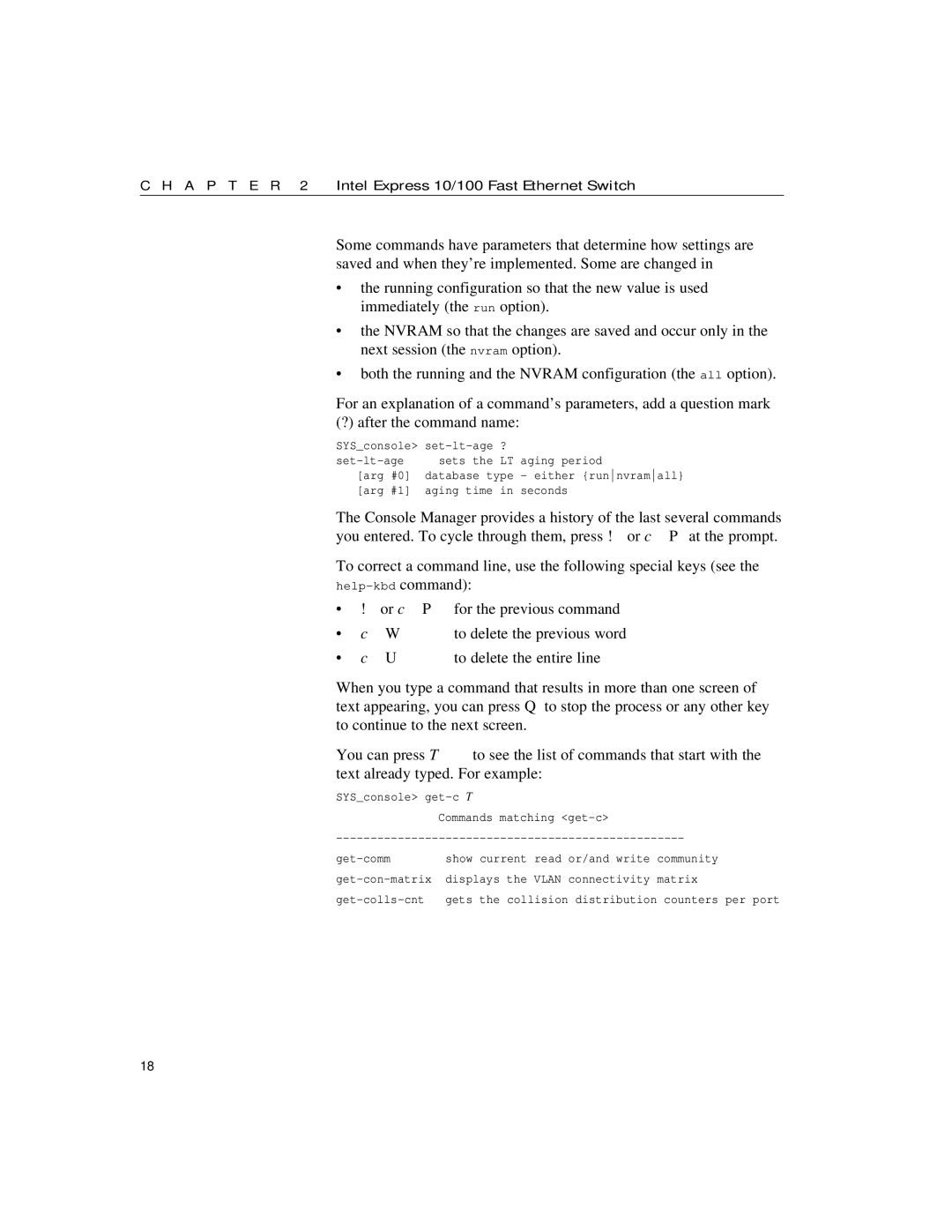C H A P T E R 2 | Intel Express 10/100 Fast Ethernet Switch |
Some commands have parameters that determine how settings are saved and when they’re implemented. Some are changed in
•the running configuration so that the new value is used immediately (the run option).
•the NVRAM so that the changes are saved and occur only in the next session (the nvram option).
•both the running and the NVRAM configuration (the all option).
For an explanation of a command’s parameters, add a question mark
(?) after the command name:
SYS_console> | ? |
| ||
sets the | LT | aging period | ||
[arg | #0] | database type | - either {runnvramall} | |
[arg | #1] | aging time in seconds | ||
The Console Manager provides a history of the last several commands you entered. To cycle through them, press ! or cP at the prompt.
To correct a command line, use the following special keys (see the command):
•! or cP for the previous command
•cW to delete the previous word
•cU to delete the entire line
When you type a command that results in more than one screen of text appearing, you can press Q to stop the process or any other key to continue to the next screen.
You can press Tto see the list of commands that start with the text already typed. For example:
SYS_console>
Commands matching
show | current | read | or/and write | community | ||
displays | the | VLAN | connectivity | matrix | ||
gets | the | collision distribution counters per port | ||||
18
